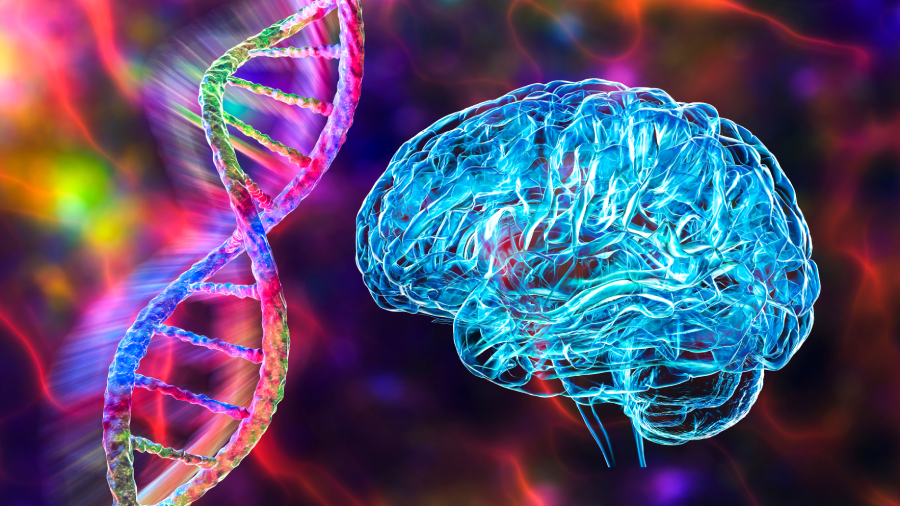A Combination of Tests Shows Learning Capabilities of Nonverbal Children with Rare Brain Disorder
Feb. 25, 2025
Scientists have found that a pair of objective assessments can measure nonverbal learning skills and show the cognitive abilities of children with a rare genetic brain disorder called Aicardi-Goutières syndrome (AGS). The researchers say the findings, reported in Neurology, will allow doctors to provide the right kinds of support and therapy. They also suggest the results stress the importance of listening to families when trying to assess the learning abilities of children with these types of disorders. The research was supported in part by the Global Leukodystrophy Initiative-Clinical Trials Network (GLIA-CTN), part of the NCATS-led Rare Diseases Clinical Research Network (RDCRN). The National Institute of Neurological Disorders and Stroke also supported this work.
AGS is a rare genetic disorder that affects the brain, spinal cord and immune system. It is a type of leukodystrophy, a group of diseases that damage the fatty sheath that protects the nerve cells in the brain and spinal cord. This damage slows or prevents messages between cells. In people who have AGS, the body’s immune system turns on itself.
“Many children with AGS have normal IQs,” said Laura Adang, M.D., Ph.D., a clinician at Children’s Hospital of Philadelphia (CHOP) who co-led the work. “They have severe neurologic injury and often are in a sort of brain fog. They have difficulties in communication and with movement.”
Adang noted that children with AGS can have a range of intellectual and language limitations. Many can’t speak. As a result, it can be hard for families and clinicians to assess the child’s thinking and learning abilities, especially with traditional IQ tests. Receptive language problems can disrupt the ability to grasp words that are heard or read and to process information. In addition, traditional IQ tests are timed and often require fine motor movement.
Adang, CHOP colleague Adeline Vanderver, M.D., and their team wanted to test children’s cognitive skills using tasks that relied less on timing and movement. They took advantage of a GLIA-CTN–funded natural history study that charted AGS progression in a group of children over time. The researchers used two different tests to measure neurologic function in children. One test, the Leiter International Performance Scale-3rd edition (Leiter-3), measures nonverbal cognition that is less dependent on motor skills and speed. It was given to 57 children with AGS. The second test, the Vineland Adaptive Behavior Scale 3rd edition (VABS-3), showed how parents gauged their children’s personal and social skills. The researchers compared the results of these two assessments with AGS Severity Scale scores, a test of overall neurological abilities.
The VABS-3 test showed that the motor skills of children with AGS were more affected than communication, and daily living and socialization skills. The researchers found that, across all categories of motor abilities on the AGS scale, a subset of children scored within a normal IQ range.
They also found that the Leiter test effectively measured a child’s cognitive ability and was in step with the parents’ judgment. Adang said that traditional tests of cognition may be failing children with AGS and their families.
“There’s this connection between expressive (spoken) and receptive language (understanding of their environment). Children we see with AGS have much stronger nonverbal skills and understanding of the world around them. The kids understand jokes and laugh, though they have no expressive language skills,” Adang explained. “Information like this could help us to design future clinical trials.”
The RDCRN support was crucial, Vanderver pointed out. “The fact that we have been following a large patient cohort through the GLIA-CTN was a key to doing this work.”
Adang thinks her team’s result can be adapted for other diseases, especially leukodystrophies.
“These results are a validation for parents saying, ‘My child can understand more than you are capturing in your tests,’” she said. “We have to listen to families.”
Related Content
Rare Diseases Clinical Research Network (RDCRN)
We oversee this NIH-wide grant program that supports medical research on over 200 rare diseases through clinical studies, including collaborations, study enrollment and data sharing.
Our Impact on Rare Diseases
NCATS is the heart of rare diseases research at NIH. We speed the development of new rare disease treatments by focusing on approaches that can address more than one disease at a time.
New Path for a Gene Therapy Trial at NIH for a Rare Metabolic Disease
NCATS and other NIH institutes and centers have teamed up to advance a gene therapy treatment for methylmalonic acidemia (MMA), a rare genetic disorder.



